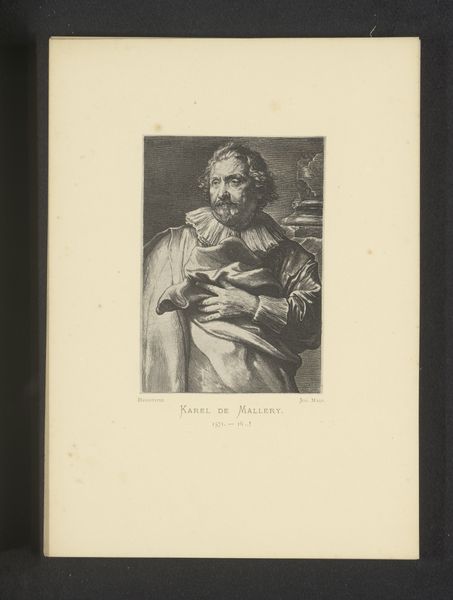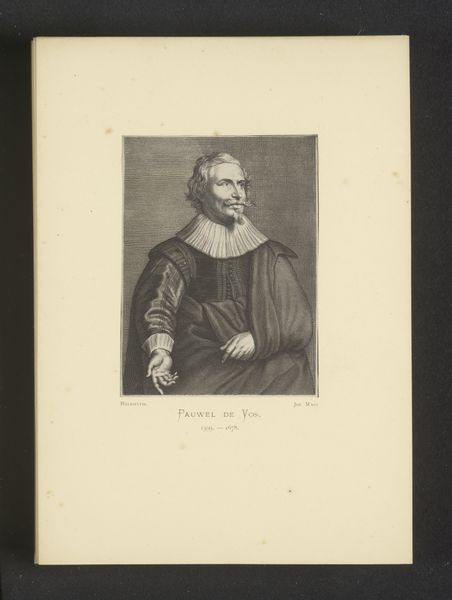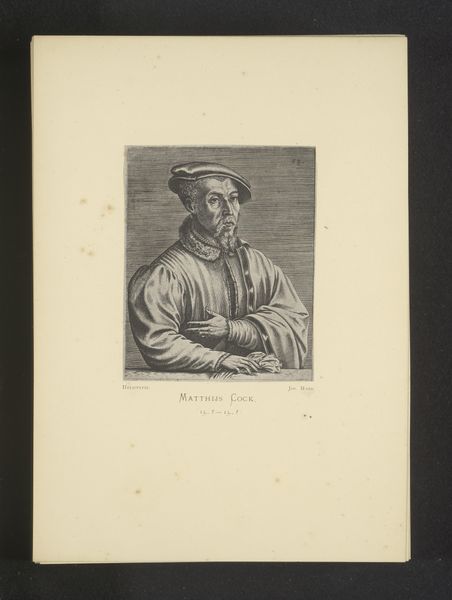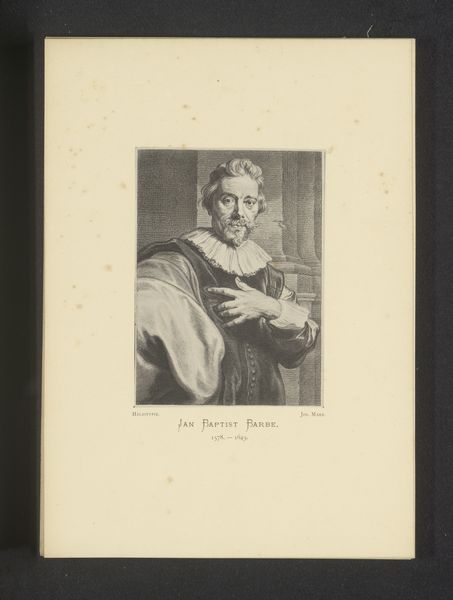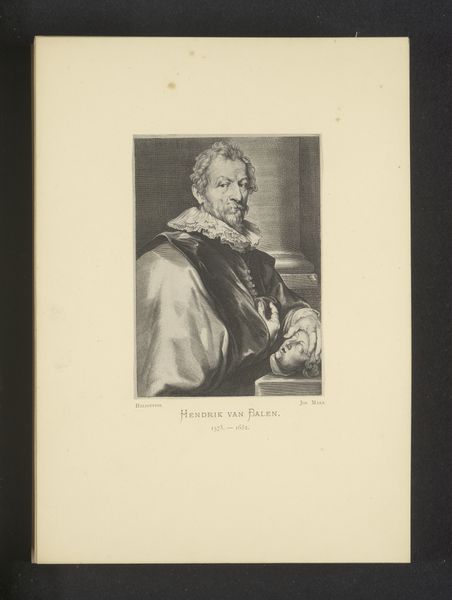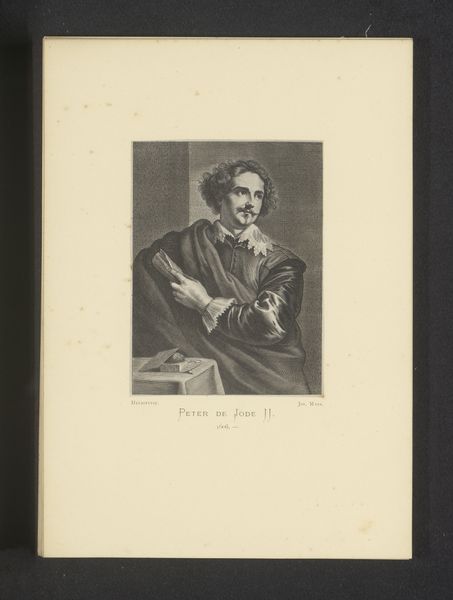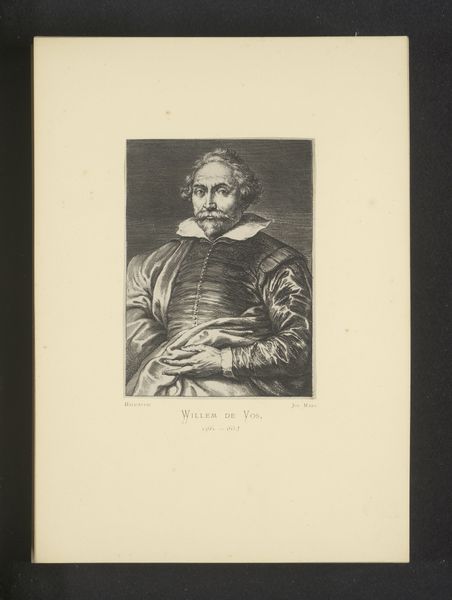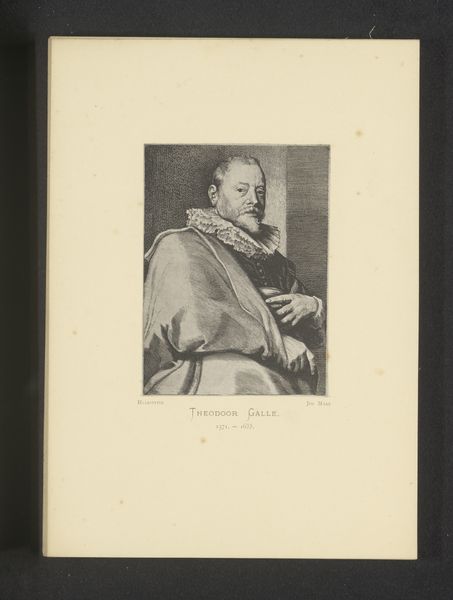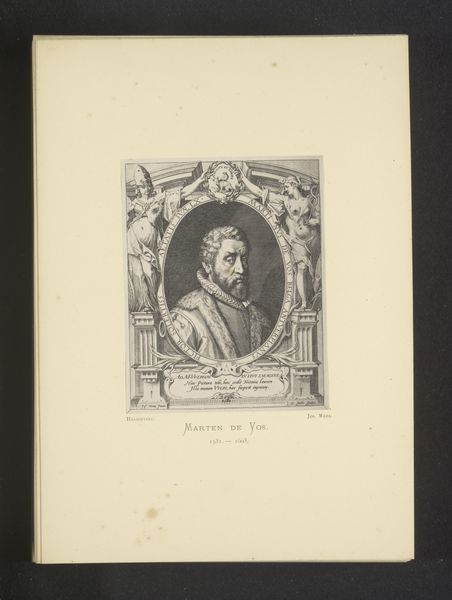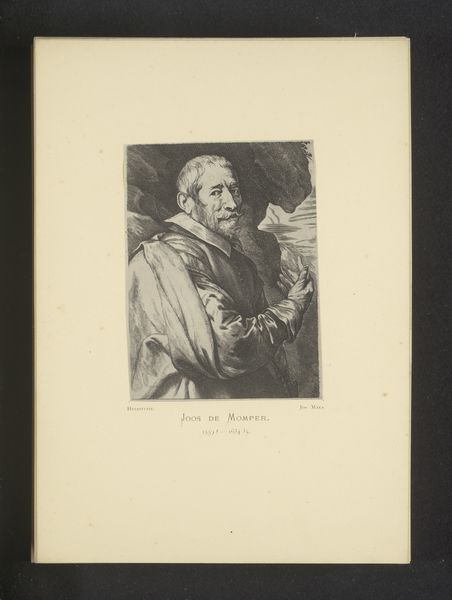
Reproductie van een gravure van een portret van Pieter de Jode (I) door Lucas Vorsterman (I) before 1877
0:00
0:00
Dimensions: height 123 mm, width 91 mm
Copyright: Rijks Museum: Open Domain
Curator: This print, believed to be created before 1877, is titled "Reproductie van een gravure van een portret van Pieter de Jode (I) door Lucas Vorsterman (I)." It’s a reproduction, likely using graphite on paper, of an engraving by Lucas Vorsterman after a portrait of the engraver Pieter de Jode the Elder. The artwork itself captures a prominent figure from the Baroque era. What's your initial take? Editor: The first thing that strikes me is the subject’s intense gaze; there is a sense of quiet power in his expression. It's an image that immediately asserts authority and presence. I also notice the frilled collar—a small detail that speaks volumes about the status and the social performance embedded in portraiture. Curator: Exactly! The piece engages with power and the politics of imagery on several levels, both through the subject himself—an established engraver—and the historical moment in which it was produced. In that era, portraiture was deeply connected to social standing, as this detail indicates so aptly. Looking closer, the technical skill is also evident; do you agree? Editor: Absolutely, the detail is extraordinary. Notice how Vorsterman used engraving to mimic the tonality of paint. The contrast creates dramatic highlights and shadows that define de Jode's face. Furthermore, what I find particularly striking is how the reproduction itself complicates questions of authenticity and originality in art production and history. Curator: A crucial point. The reproductive nature prompts a deep consideration about hierarchies within the art world itself. What narratives does this print support regarding the art market, status, and fame during that period and our own, and what voices are pushed aside in this framework? Editor: By depicting an artist of his time, the print participates in an early form of artist branding, underscoring notions of genius. It begs questions of accessibility—who was this image meant for, and how does it contribute to a visual culture of the era? Curator: Yes, by studying the social and artistic networks reflected in images like this one, we can expose how these pieces helped construct the very concept of "the artist" that persists even now. The reproduction underscores the importance of dissemination, the move from private to a form of public recognition and artistic legitimation. Editor: Ultimately, considering all the socio-historical dynamics influencing this printed reproduction expands how we perceive, examine, and critique artwork’s influence both within and outside the gallery space. Curator: Indeed, from analyzing these images, we might discover more regarding the forces behind these long-lasting cultural definitions and hierarchies.
Comments
No comments
Be the first to comment and join the conversation on the ultimate creative platform.
